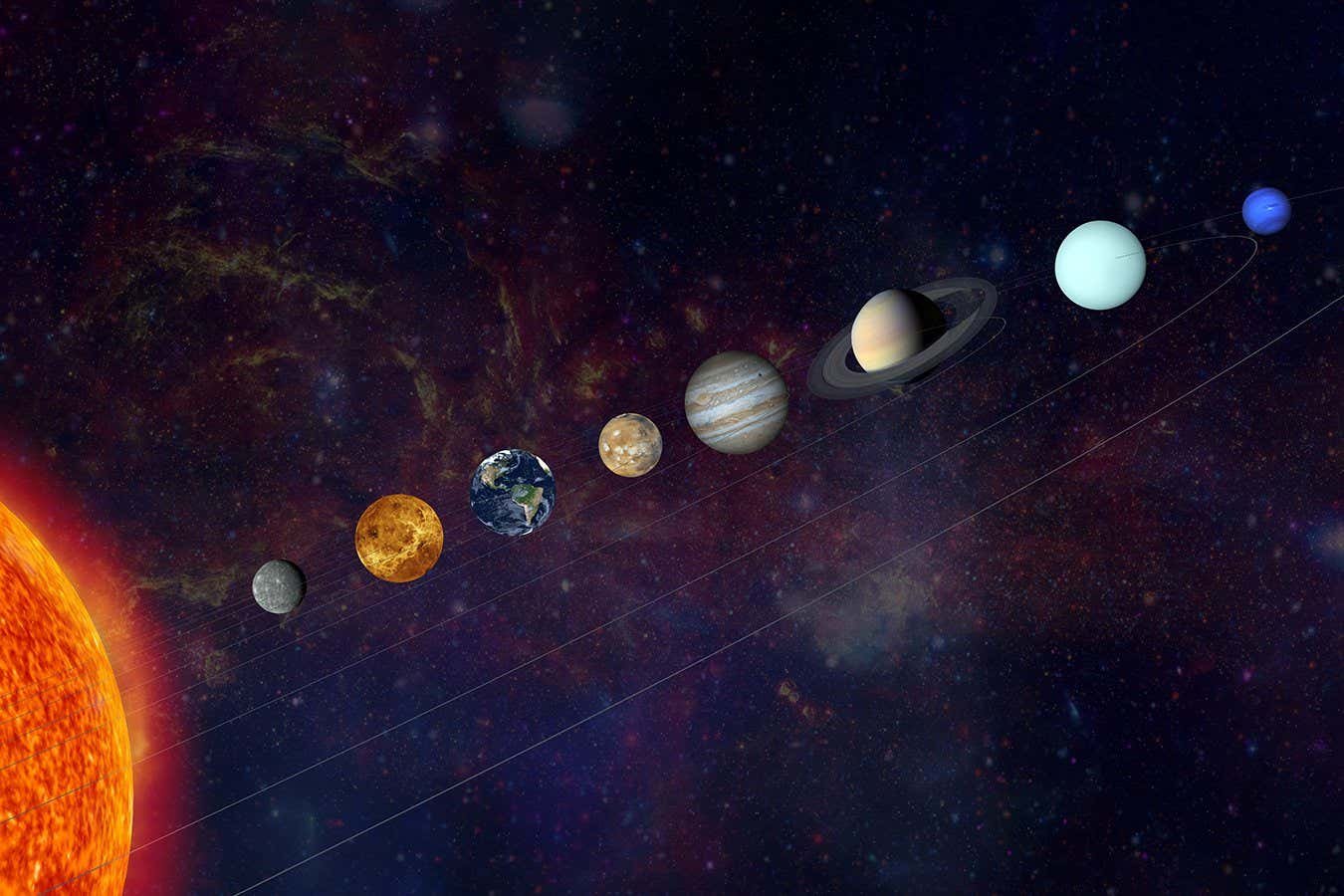All the planets appear to line up across the sky at the end of February
alxpin/Getty Images
All the planets of our solar system line up to parade through the night sky at once. This extraordinary celestial event will see the sky dotted with seven visible planets in what is known as a great planetary alignment.
The eight planets in our solar system orbit the sun in roughly the same plane because they all originally formed from the same disc of debris around the sun. The line the sun traces across the daytime sky, called the ecliptic, aligns with this plane, so when the planets appear in the sky, they all appear roughly along the ecliptic. It’s not a perfect line of planets because their orbits are slightly tilted, but it’s pretty close.
Never is this more apparent than during a planetary alignment. An alignment that includes all the planets except Mercury takes place in mid-January. Uranus and Neptune, which are the most distant planets, will only be visible through a telescope, but you may be able to see the others with the naked eye.
The major alignment, including Mercury, will only happen for a few nights around February 28, depending on your location. All seven planets will be visible shortly after sunset, stretching in an arc across the sky.
When the sky is completely dark, Mercury and Saturn will have sunk below the horizon, with Neptune and Venus following shortly after. The best time to spot the planets will be in the hour after sunset, when all but Mars, Jupiter and Uranus will be close to the horizon. These three will continue to hang around most of the night, but seeing three planets in the sky is not nearly as rare as finding all seven.
The main thing that prevents such alignments from being visible all the time – apart from the weather – is the difference in orbital periods between the planets. Mercury, which is closest to the Sun, takes about 88 Earth days to complete one orbit, while Neptune, which is the most distant, takes almost 165 Earth years.
A large alignment is only possible when the planets are all relatively far from the sun so they are visible at night, and all in roughly the same half of the sky so they can be seen at the same time. It’s a remarkable cyclical coincidence – sometimes there are several major adjustments in a year, and sometimes several years go by without a single one.
In some ways, a planetary alignment is simply an optical illusion: the planets are still separated by millions or trillions of kilometers, and if you could look down on our solar system from the outside, you would never see them lined up in a perfect line coming from the sun. But for stargazers around the world, it’s an excellent chance to see all the planets at once, neatly lined up across the sky.
Subjects:
